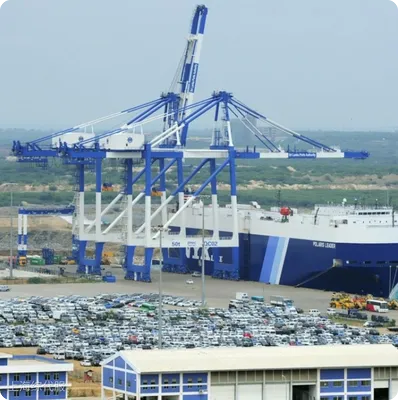
Sri Lankas Ministry of Finance recently announced that it has decided to lift import restrictions on 286 items as the domestic economy stabilizes, a new sign that the South Asian country is beginning to get out of the worst economic crisis in decades.
Since the outbreak of the economic crisis in the spring of 2022, Sri Lanka has faced severe exhaustion of foreign exchange reserves and a shortage of livelihoods, sparking massive public protests. In order to address this crisis, the government has restricted imports of more than 3,200 commodities. However, Sri Lanka’s economic situation has improved in recent months as it received $2.9 billion in bailout from the International Monetary Fund (IMF), as well as a reduction in inflation and reconstruction of foreign exchange reserves.
Sri Lanka’s Treasury Department has now decided to lift import restrictions on 286 commodities, including electronics, food, wood materials, sanitary cleaning equipment, train wagons and radio, according to Treasury Secretary Shehan Semasinghe, who said the imports could help mitigate prices by providing consumers with choice and lower cost alternatives.
China is Sri Lanka’s largest source of imports, with a total trade value of $42,5 billion between China and Sri Lanka in 2022.China’s main exports to Sri Lanka are chemicals, electronic equipment, needle-woven items and metal products.China’s imports from Sri Lanka are mainly fuel, tea, jewelry and fiber fabrics.
However, while Sri Lanka’s economy is gradually recovering, its recovery path is still challenging: unsustainable debt, a severe international debt crisis, coupled with the incurable traces of the COVID-19 epidemic, and the government’s insistence on spending scarce foreign reserves to support the Sri Lankan ruble, leading to a severe shortage of foreign exchange and essential supplies such as fuel, medicines, gas and food, are all challenges to Sri Lanka’s economic recovery.
Despite this, the Central Bank of Sri Lanka remains optimistic about the economic outlook. Central Bank Governor South Dalar Velazinha said the economy is “returning to the right track,” but he stressed that “recovery from the crisis is a gradual process” that cannot be stopped at once. According to data released by the Bureau of Statistics, Sri Lanka’s main inflation rate in April fell from 50.3% in March to 35.3%, a sign that the crisis-stricken economy has eased.
In addition, the Central Bank of Sri Lanka recently announced a reduction in interest rates, for the first time since the island country announced its bankruptcy last year, and was viewed by the outside as a sign that the country’s economy has begun to recover from the crisis.The central bank announced a reduction of the fixed loan convenience rate and the fixed deposit convenience rate by 250 basis points to 14% and 13%, respectively, with the expectation of “stimulating the economy to recover from the historic contraction activity that emerged in 2022 while relieving the pressure on the financial markets.”
Although Sri Lanka’s economic recovery path remains tough, the South Asian country’s determination and efforts have undoubtedly laid a solid foundation for its future development.


 Follow customer service WeChat
Follow customer service WeChat